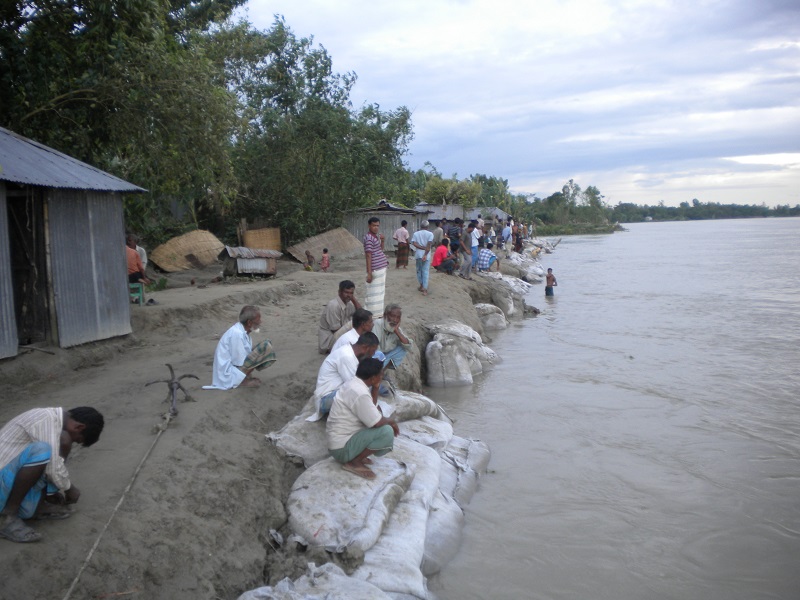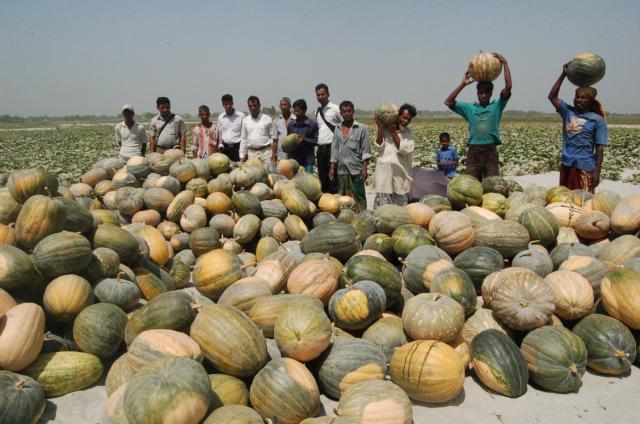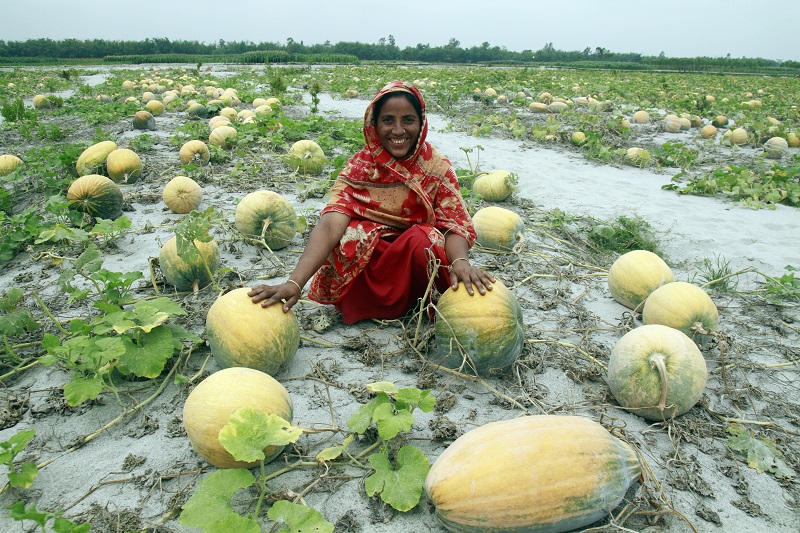Pumpkin farming in Bangladesh helps some of the most vulnerable people to cope with floods & climate change and so escape poverty. This reveals critical lessons for some of the biggest problems our world faces.
How is climate change creating poverty in Bangladesh?
Bangladesh is repeatedly named as the country most vulnerable to climate change. In particular, more frequent and intense rainfall plus rising sea-level is making flooding much more likely. While for some countries coping with climate change is a problem for the future, impacts are already being felt in Bangladesh. The Asian Development Bank reports that more rain is falling and extreme events, such as floods, are becoming more common and severe. Rural areas are being caught in a devastating cycle of droughts and floods. In a country where 70% of the population directly depend on agriculture this is a serious problem.
Weather events have cost Bangladesh $12billion in the last 40 years, says The World Bank. By 2050, it’s likely that climate change could further reduce the amount of food farmers can grow by up to 30%. As the impact of climate change becomes more severe, it will hamper any attempts to improve the poverty and malnutrition that effect vulnerable people across the country.
To make matters worse, the most vulnerable people are often forced to live in the most dangerous areas. For example, the poorest families are often only able to build their homes and farms on the very edge of riverbanks, which are washed away during floods. As floods become more common people are more frequently losing their homes, livelihoods and food supply – trapping them into cycle of poverty and food insecurity.

How can pumpkins fight poverty?
The Pumpkins against Poverty project run by Practical Action is working with 6,000 of the most vulnerable people in 26 villages across Bangladesh. The aim is to help build their ability to cope with flooding and climate change.
While floodwater washes away riverbanks, homes and fields, it also creates new islands (called sandbars) in the middle of the flooding rivers. Practical Action is helping communities to turn these sandbars into pumpkin fields. With the time it takes to dig a small hole, and the addition of a small amount of compost, individuals who lost their fields to floods are guaranteed a harvest. Even better, women are actively participating in pumpkin farming around their household tasks – supporting themselves and their children.
Practical Action is also helping farmers to sell the pumpkins they do not eat. Pumpkin selling can offer a great additional income for families, especially in the monsoon season when prices are three times higher than at other times in the year.
The project has generated huge employment for some of the poorest people in Bangladesh, and especially for vulnerable women. Pumpkin growing has increased food security and the ability of communities to cope with flooding and the impacts of climate change. It has also transformed individuals into agricultural entrepreneurs, helping them to escape the trap of poverty and malnutrition.

Why is this an important lesson for the rest of the world?
The Pumpkins against Poverty project is a clear example of how simple technology can build communities’ resilience to the disaster events climate change brings. The project hopes to support the most vulnerable individuals in Bangladeshi society by actively involving women and children, and so strengthen communities from the bottom-up.
It is widely recognised that local and bottom-up innovations, such as the Pumpkins against Poverty project, are crucial to both cope with the impacts of climate change and to reduce the contribution to the cause. Despite this, there is a large gap in our understanding of how practical technology can be turned into successful projects on the ground. To be effective, projects need to carefully consider the local context and involve the community at every step. Practical Action’s Pumpkins against Poverty project is helping individuals suffering from the impacts of climate change. Moreover, it provides critical lessons for some of the biggest problems our world faces: hunger, nutrition, employment and gender inclusion.
Find out more…
If you would like to read more on technological solutions for climate change in Bangladesh see the Adaptation Technology in Bangladesh report by the Gobeshona sub-group.
Alternatively discover other solutions to increase flood resilience on the Flood Resilience Portal which is dedicated to providing specialist advice and guidance.
More of Practical Action’s work in Bangladesh can be found here.


Comments